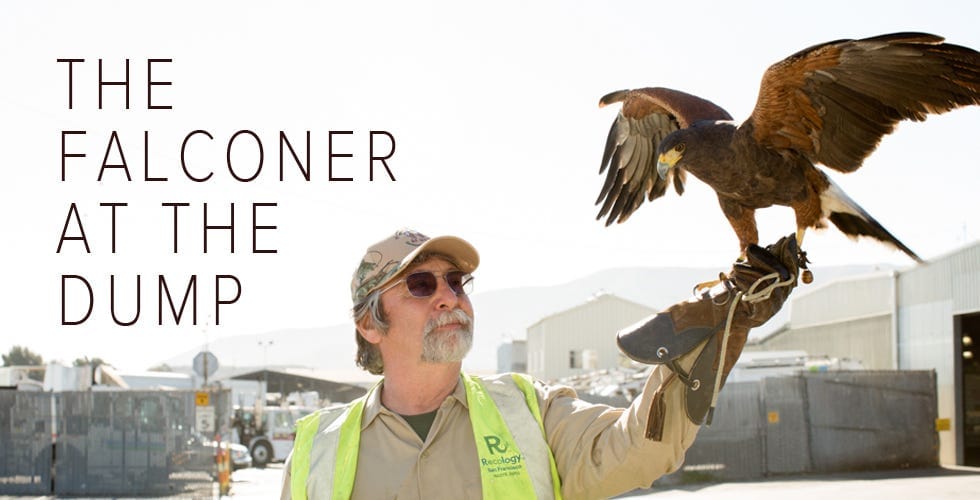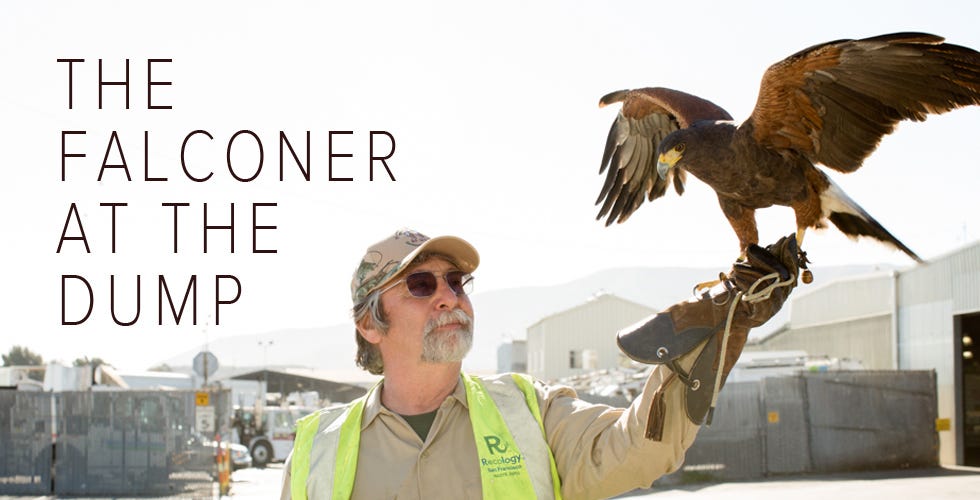
By Amber Schadewald
I recently went on a date to the city dump — yes, the spot where our heaps of unwanted stuff become a massive, sad lump. My boyfriend wanted to learn how to make his workplace more green, and I agreed to join him for a trashy, romantic adventure. So there we were at Recology on a sunny Saturday morning, chatting about the evilness of plastic while gawking at trucks and trash. We held hands and sighed.
Then, to my great surprise, we were introduced to the dump’s full-time falconer, who had a hawk elegantly perched on his arm while a wiry-haired dog weaved between his legs. I was baffled. A pushy tour mate hogged the question-and-answer allotment, leaving me with a host of burning queries and no choice but to return to Bayview for date number two — a raptor rendezvous.

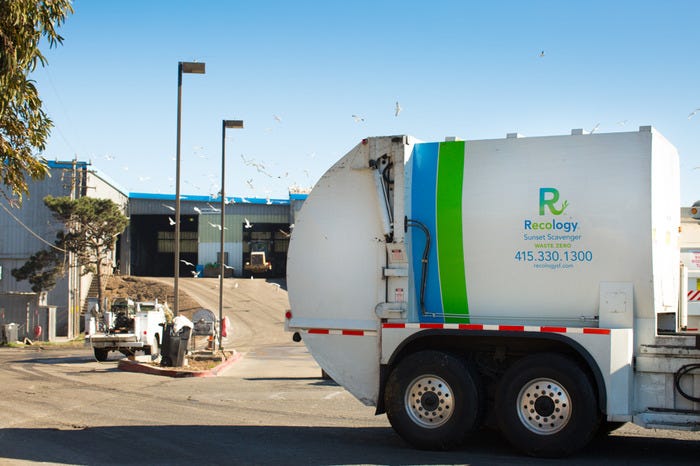

It’s a busy Thursday morning when we return to Recology, and the trucks are plowing through the yard with fervor. The slightly sweet smell of rotting garbage wafts through the air as I’m reintroduced to falconer Robert Snitchler, his boss, master falconer Steve Vasconcellos, and Jack, the Jack Russell terrier.




Both men are licensed falconers, but their job at the dump is bird abatement: to elicit a natural predator-and-prey relationship between trained, captive-bred hawks and problematic wild birds. Prior to hawks, the dump used large strips of plastic or sprayed the garbage with grape extract (seagulls turn their beaks at the bitterness). Overall, bird abatement is a greener, more effective process.
The falconer “flies his hawk” with a series of commands, letting the predator’s intimidating presence be a soaring death threat. The freaked seagulls flap around and flee to safer skies. All the fuss is for the good of the gulls, to discourage their ingestion of chicken bones, burrito scraps, ketchup-smeared plastic, and dangerous chemicals. When left to their own scavenging devices, the birds can cause trouble, like dropping garbage into the bay, feeding their babies regurgitated toxins, sharing diseases with the rest of the bird population, and shitting on city workers.

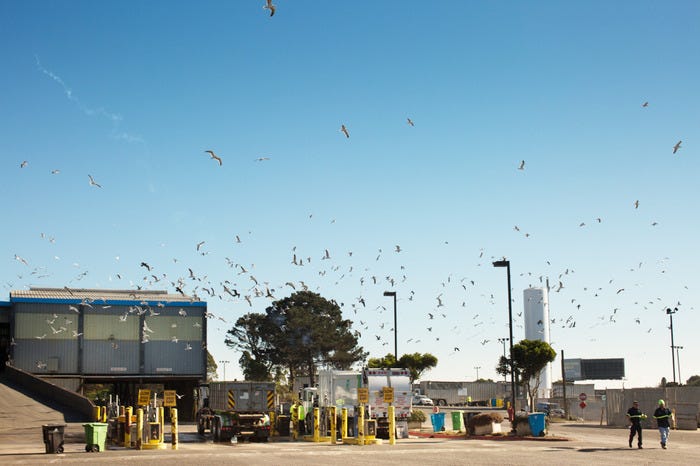
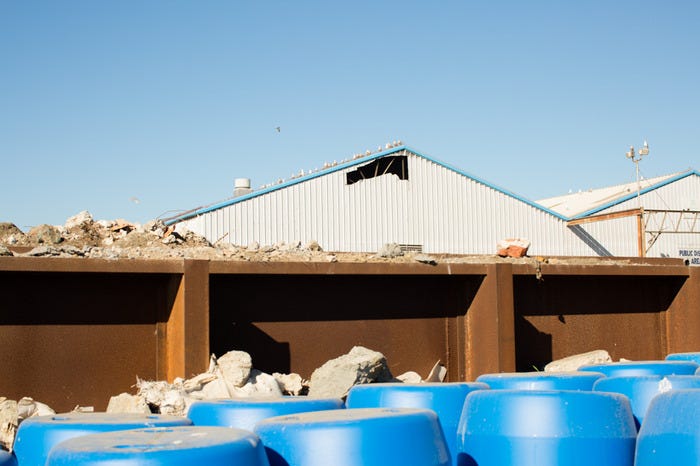

Keeping the mooching, trash-poaching seagulls in the air is no small feat. Swarms line the roofs and light posts, each beady gaze fixated on the incoming lot. The falconers and their hawk coworkers are at the dump six days a week, 10 hours a day, to make the pests uncomfortable — the law forbids bird murder. The falconers use meticulous weight watching to keep their hawks from seagull snacking; they are kept hungry enough to follow commands, but not starved enough to make them want to hunt.

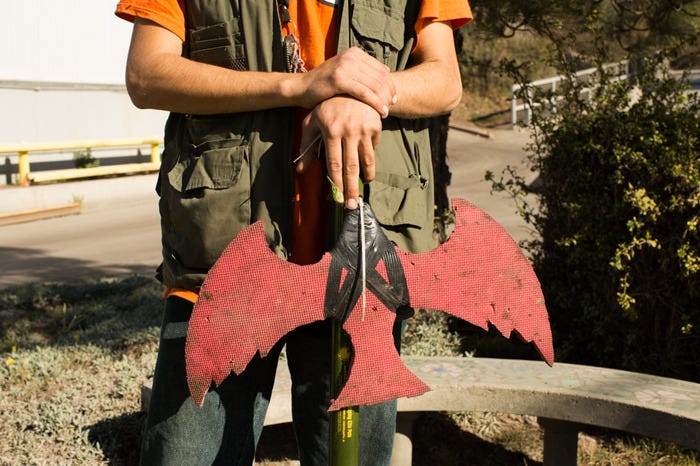

The falconers also “push off” gulls with lure poles (a hawk-shaped cutout tied to the end of a long stick) and small pyrotechnics. Jack earns his keep with daily on-the-ground bird chasing.
“You fly your hawks and run your dogs,” Vasconcellos sums up the job with a grin. He’s been working at Recology for a decade. “We’re doing seagull training as much as hawk training.”
“It’s a pretty pleasant workday, depending on how heavy the seagulls are,” Snitchler says while showing me their digs. The workspace feels like part clubhouse, part pet sanctuary. The hawks perch at the center of camp in the sun, and a collection of shaded cages house other critters. I peeked into one and spotted a chicken, a quail, and a rabbit in a cuddle puddle. Jack hunts rats in his downtime.

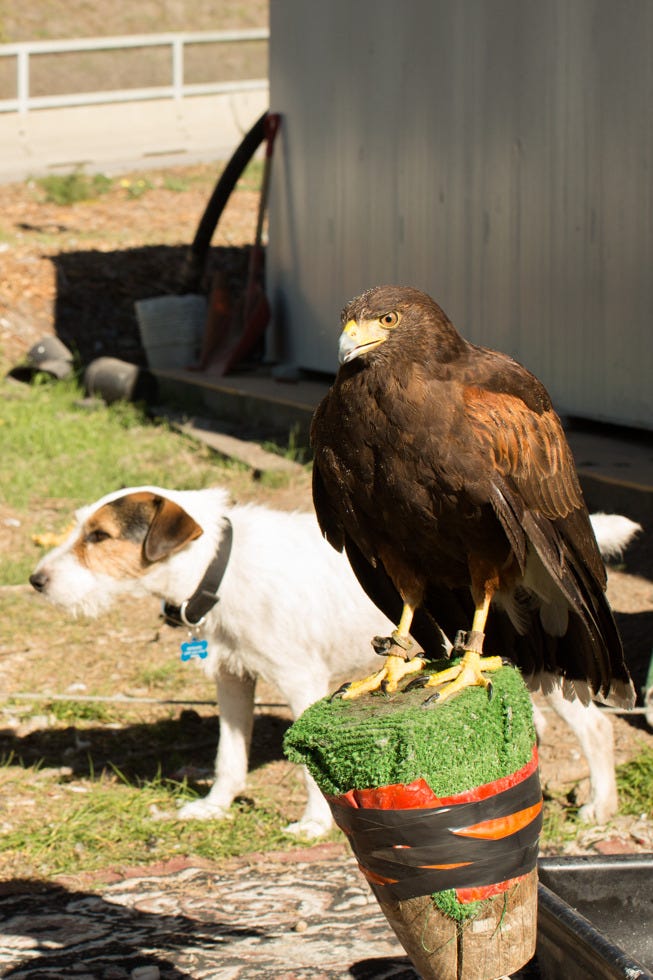

On the day of my visit there are two Harris Hawks on the clock: Ranma and George Junior, a brother and sister from separate clutches (the bird equivalent to litters). It’s a great job for a bird, promising solid benefits like health care, a consistent supply of fresh quail (sometimes rabbit or pigeon wings), and safe mews (a.k.a. hawk housing).

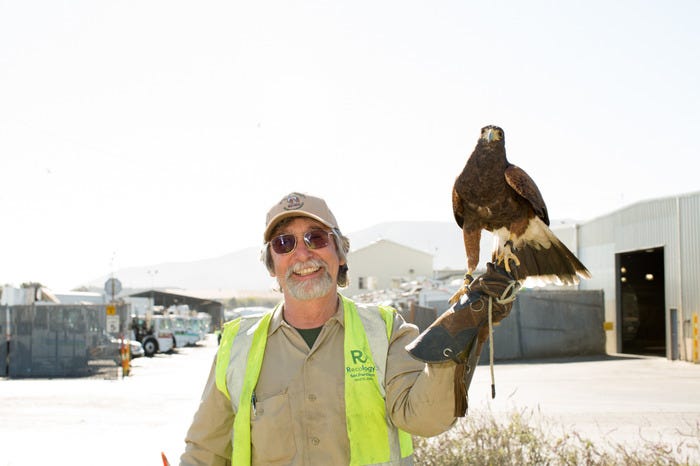

The unique social nature of Harris Hawks makes them a premium hire for abatement gigs, and they’re easy to train and easy to love. Ranma is Snitchler’s obvious favorite — a two-year-old beauty that doesn’t mind being pet. “She’s such a sweetheart. Sometimes I refer to her as my baby,” he says, preparing her for flight by tying a tracking bell to her ankle.
It’s midday, the height of seagull hunger and time for hawk recess. Snitchler grabs a dead quail from the cooler and cuts it with scissors. He stuffs some bloody chunks into a leather lure pouch and the pocket of his falconer vest. He picks up Ranma and slips a “dutch hood” over her face while they walk to a seagull-riddled building. She clutches to his gauntlet glove with excited talons.

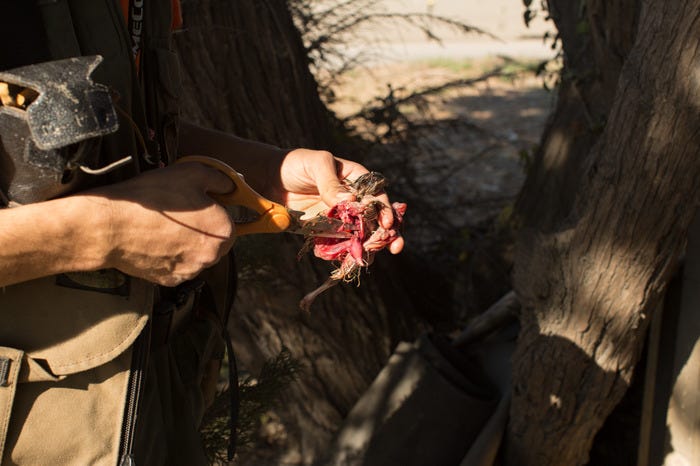
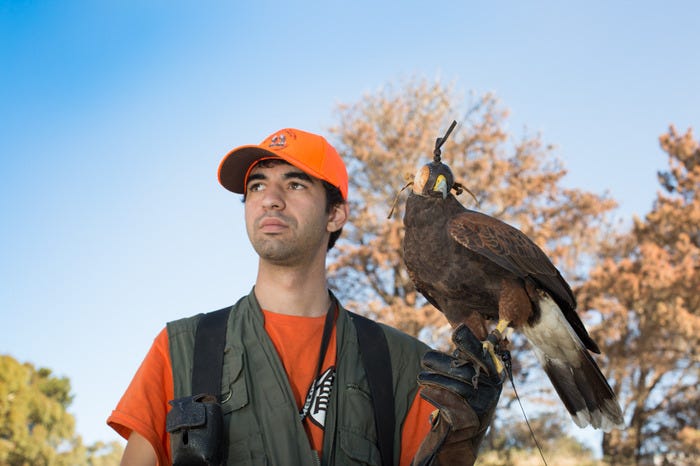

When Snitchler sets Ranma free, she effortlessly soars to a nearby lamppost. He whistles and walks a few steps; she follows overhead. The success of a flight depends on the handler’s ability to hold his hawk’s attention. Sometimes they fly for two minutes and sometimes two hours, all depending on the bird’s mood and hunger level.
When the seagull scaring is complete, Snitchler whistles and tosses the lure, calling Ranma down to retrieve her meat treat. She tears up her reward, cleans her beak, and spits on Snitchler’s chest. Show over.
“They’re like dogs with wings,” Snitchler says with a big grin. With the work finished and the bird’s belly fat, it’s time to kick it back at the fort.
“Once they’re full of food, they just like to sit,” Snitchler says. “They go into a food coma.”
Photography by Molly DeCoudreaux
Designed by Sarah Han



